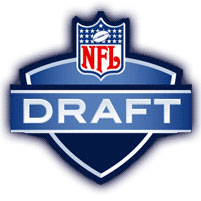 Now that the 2014 NFL Draft is finally over and all of the endless speculation has been put to rest, check out how some of the top draftees did in the past. Evidence shows that the first 10 picks get the top dollar deals and it starts dropping off rather steeply after that.
Now that the 2014 NFL Draft is finally over and all of the endless speculation has been put to rest, check out how some of the top draftees did in the past. Evidence shows that the first 10 picks get the top dollar deals and it starts dropping off rather steeply after that.
Back in 2011 the NFL and the NFLPA, the players union, worked out changes to the Collective Bargaining Agreement (CBA) which changed forever the way that first year players entering the league would be compensated, aka the Rookie Wage Scale.
Under the 2011 agreement, all contracts for players being drafted are for four years. With first round choices, the team also has the option to extend the deal for a fifth year, however the option must be exercised after the third year of the rookie contract with a deadline in early May. In case of injury, the fifth year option is guaranteed.
For the top ten picks from their draft, salaries are determined by what is known as a ‘transition tender’, which is the average of the top ten salaries for that position during the fourth year of the contract. Yes, it does start to get a bit complicated.
If a player is drafted outside of that coveted ‘top ten selection’, then the money starts to diminish rapidly. For example, JJ Watt of the Houston Texans was drafted number eleven in the 2011 draft. He signed a four year deal package worth a little under eleven and a quarter million dollars. Blaine Gabbert, who came in at number ten in that draft, got a whopping $765,000 more than Watt who came in just one pick later.
What’s more, when Watt gets to his fifth year option, it will be for a little under seven million bucks whereas, if he had just come in at number ten in the draft, he would be set up to receive over ten and a half million dollars a year, over three and a half million difference!
For first round quarterbacks such as Cam Newton and Sam Bradford the numbers involved could finance the farm team for many clubs.
So naturally the bean counters for each NFL team are consulted when making the decision when to draft new prospects, in which round. The higher salaries and the added benefits for the first round guys, especially figuring the fifth year options may make that particular player not quite as attractive to some teams.




